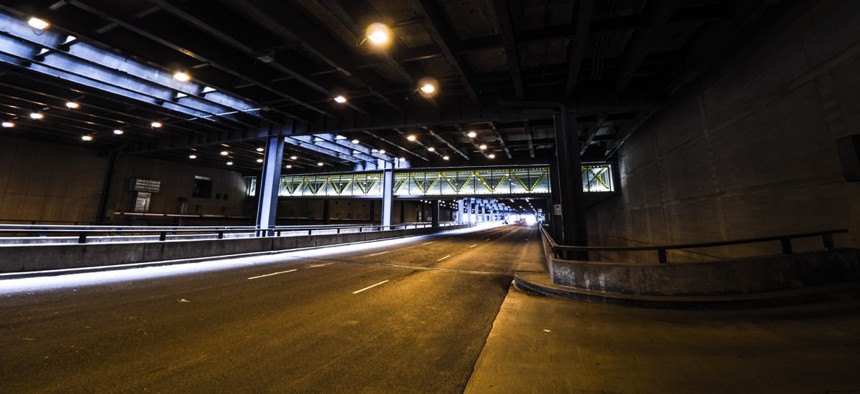Navigating Chicago’s ‘Labyrinth’ of Lower Roads Just Got Easier

Lower Randolph Street in Chicago

Connecting state and local government leaders
A public-private partnership between the city, Waze and SpotHero installed more than 500 Waze Beacons to help drivers pinpoint their locations.
Drivers often have trouble navigating Chicago’s multi-level streets, which can confound GPS apps.
This was a particular problem for getting to parking garages on the lower roads, said Elan Mosbacher, SVP of strategy and operations at parking reservation service SpotHero. In 90 percent of cases where drivers couldn’t find lots where they’d booked spaces, it was due to navigation issues and GPS blackouts, he said.
So, SpotHero approached Chicago and Waze Beacons looking to fund installment of its devices along the city’s tunnels. The resulting public-private partnership deployed more than 400 Waze beacons along five miles of underground roads to provide Bluetooth connectivity where GPS blackouts occur.
In the last two years, Waze Beacons has partnered with Pittsburgh and the Massachusetts Department of Transportation in Boston, as well as cities in Brazil, Czech Republic, France, Israel, and Italy.
The devices rely on Google’s open-source framework to transmit a unique identifier 10 times a second. Placed 100 feet apart, the beacons pinpoint a person’s position relative to their location.
These are expected to be particularly useful in the maze of Chicago’s lower roads.
“It’s essentially an underground labyrinth of many streets—one on top of the other,” Gil Disatnik, head of Waze Beacons, told Route Fifty.
Beacons are particularly useful to immigrants or tourists who can’t read English but need to navigate streets.
From inception to implementation the project took three months, with deployment occurring between Aug. 27 and 30.
“It was a very, very fast process,” Mosbacher said. “And I think, in general, Chicago was very excited about solving this problem.”
Often technology outpaces a city’s ability to regulate and procure a solution, but in this case ensuring the map of roads with beacon placements was correct and installation—which required a cherry picker—took up most of the time, Disatnik said. Deployment occurred along streets like Lower Wacker Drive, Lower Lower Wacker Drive, Lower Columbus Drive and Lower Michigan Avenue.
The beacons went live on Labor Day and “ease the navigation for everyone in Chicago, not just Waze drivers,” Disatnik added. That means a company like Apple can make use of the devices without needing to enter a contract with the Chicago Department of Transportation, which installed and now operates the beacons.
Other benefits of a stable navigation signal are that it improves driver alertness while reducing stress and travel time as much as 16 percent, according to TomTom. While it’s too early to analyze the beacons’ impact on Chicago tunnel safety, they’re expected to reduce traffic collisions underground.
“Tunnels tend to have more crashes than open roads due to people getting lost in there,” Disatnik said.
Dave Nyczepir is a News Editor at Government Executive’s Route Fifty and is based in Washington, D.C.

NEXT STORY: FAA preps traffic management for drones





